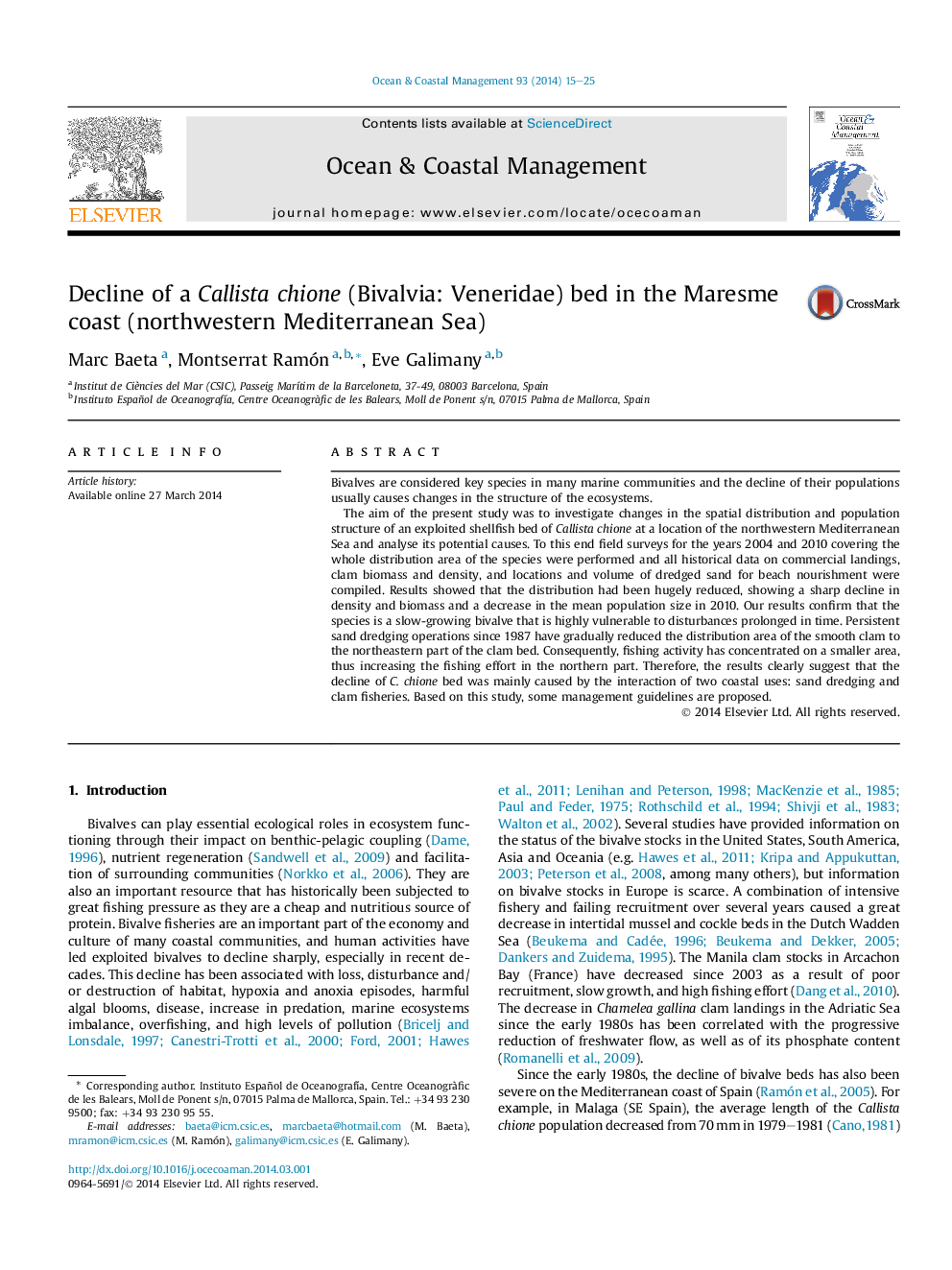| Article ID | Journal | Published Year | Pages | File Type |
|---|---|---|---|---|
| 1723614 | Ocean & Coastal Management | 2014 | 11 Pages |
•Temporal changes on the population of Callista chione in a Mediterranean site were studied.•Sand dredging and overfishing led the smooth clam bed to a critical situation and fishery collapse.•An integrated long term management is required to recover the smooth clam bed in the area.
Bivalves are considered key species in many marine communities and the decline of their populations usually causes changes in the structure of the ecosystems.The aim of the present study was to investigate changes in the spatial distribution and population structure of an exploited shellfish bed of Callista chione at a location of the northwestern Mediterranean Sea and analyse its potential causes. To this end field surveys for the years 2004 and 2010 covering the whole distribution area of the species were performed and all historical data on commercial landings, clam biomass and density, and locations and volume of dredged sand for beach nourishment were compiled. Results showed that the distribution had been hugely reduced, showing a sharp decline in density and biomass and a decrease in the mean population size in 2010. Our results confirm that the species is a slow-growing bivalve that is highly vulnerable to disturbances prolonged in time. Persistent sand dredging operations since 1987 have gradually reduced the distribution area of the smooth clam to the northeastern part of the clam bed. Consequently, fishing activity has concentrated on a smaller area, thus increasing the fishing effort in the northern part. Therefore, the results clearly suggest that the decline of C. chione bed was mainly caused by the interaction of two coastal uses: sand dredging and clam fisheries. Based on this study, some management guidelines are proposed.
